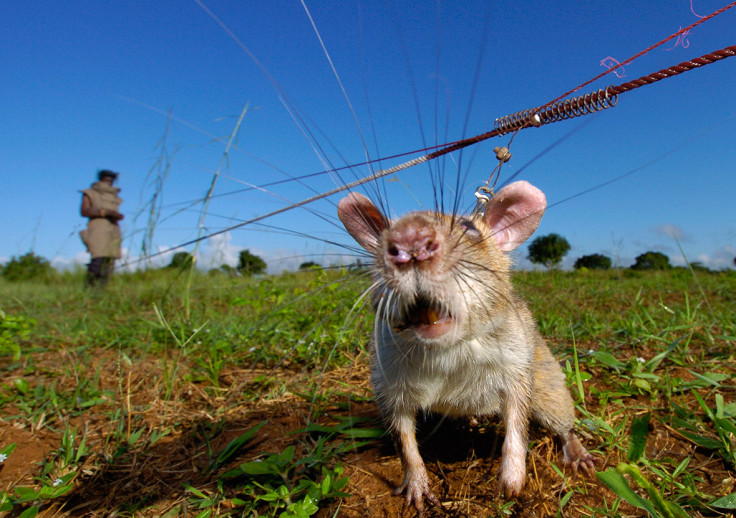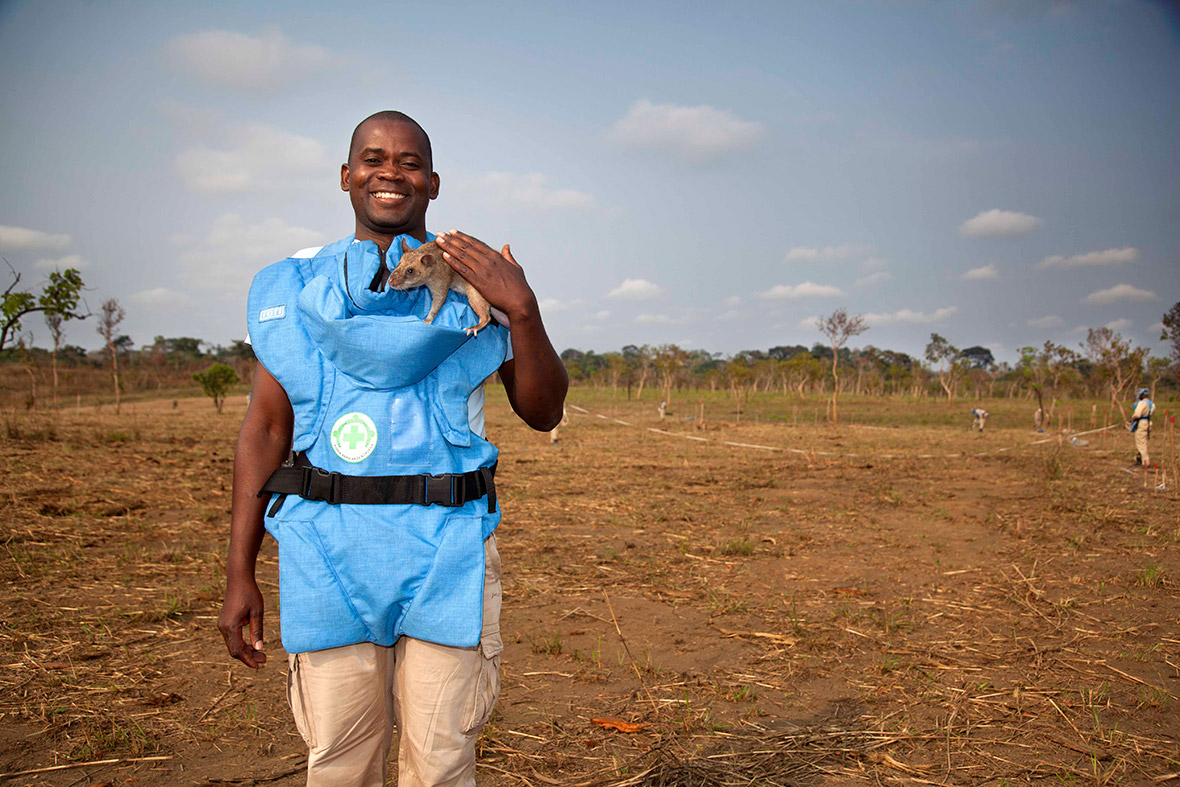Photos of giant rats trained to sniff out unexploded landmines and bombs in war-torn countries
Giant rats have been trained to sniff out unexploded landmines in Africa, and they are now also being used in Cambodia. There are nearly 3,000 landmine accidents every year around the world; nearly half of them involving children.

In countries such as Cambodia and Angola, vast tracts of land have been rendered off-limits for decades, yet only about 3% of that land typically contains any explosive material. The rest sits idle, as communities are too afraid to use it. This is when the rats step in where others fear to tread.
A trained rat can cover much more land than a human with a metal detector. The rats' superior sense of smell means that in just 20 minutes, they can do what it would take a human mine detector up to four days to do. A human deminer has to stop every time the metal detector gives a signal, but often it turns out to be an old coin or piece of scrap metal. The rat only detects explosive (TNT) so ignores all the scrap metal and goes straight to the landmine.
They are much cheaper than human workers – when the rats detect explosives, they are rewarded with a piece of fruit. Using the rodents is far less dangerous, too, as although they are giant rats, they are too small to set off landmine detonators.
Gambian pouched rats, also known as African giant pouched rats, can grow up to 1m (3ft) long and weigh 1.4kg.







The project is the brainchild of Bart Weetjens, founder of Apopo (A Flemish acronym of Anti-Persoonsmijnen Ontmijnende Product Ontwikkeling, or Anti-Personnel Landmines Detection Product Development in English). The Belgian non-governmental organisation began breeding giant rats in 1997 and soon found they could detect not just landmines but tuberculosis in humans, too.
The rats have been used extensively in war-torn areas of Africa. Plagued by 27 years of civil war, Angola is the third-most mine affected country in the world after Afghanistan and Cambodia, according to the Landmine Monitor. The rats are helping to clear landmines and other unexploded ordnance from fields, returning land to local communities.



In April 2015, Cambodia received 15 rats, which went to work in areas densely mined during the second Indochina war. During 2015 the teams managed to remove 1,345 landmines and destroy 13,594 items of unexploded ordnance. As many as three million mines are estimated to be scattered across Cambodia, left over from 30 years of conflict that started in the 1960s. In addition, at least 26 million bombs were dropped on Cambodia during the Vietnam War, many of which remain active.
Around 20,000 Cambodians have been killed by unexploded ordnance since 1979, with 154 killed or injured in 2014.






Every year on 4 April, the United Nations aims to raise awareness of the plight of communities living in daily fear of landmines through its International Day of Mine Awareness and Assistance in Mine Action.
© Copyright IBTimes 2025. All rights reserved.






















